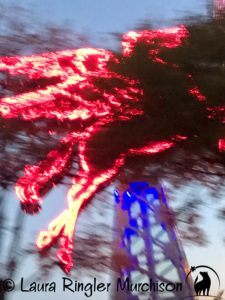
Just ten days after our American Independence Bastille Day falls. It is the day that France celebrates its national independence. Formerly called La Fête Nationale, is a massive holiday commemorating the first storming of the Bastille, a turning point in the French Revolution. I am not a monarchist, but I lament this day in history. My mother’s family is descended from French nobles and luckily they fled into England. But Madame Guillotine, slickened by the people’s unquenchable thirst for blood, was, in my opinion, horrific. To kill someone for the sake of having more than you is wrong. Period. However I believe in fighting an injustice with all my heart; I just do not believe the slaughter of so many was the right way to go about it. Consider this: for anyone who has practiced Christianity I am willing to bet most have heard it said that Mary Magdalene was a whore. For centuries this was accepted as truth. In modern times it has been revealed that it was, erroneously or no, construed by a Catholic Pope. Mary Magdalene has now been revealed as the “apostle of the apostles” and is a SAINT but for centuries she was falsely labeled a whore. Despite the fact that legally a woman’s testimony at that time was considered invalid, the authors of the four gospels all show women to be the primary witnesses to the most important event of Christianity — Christ’s resurrection from the tomb. Mary of Magdala witnessed both Jesus’ crucifixion and His resurrection. Within the four Gospels she is named at least twelve times — more than most of the apostles. The Catholic Church acknowledges this was a great untruth and she is finally being vindicated. Maybe this is too lofty a parallel to draw, but I believe Marie Antoinette has been maligned much in the same way. It is a fact that that she NEVER said, “Let them eat cake.” This has been confirmed by historians. In fact she was an intelligent woman who donated generously to charitable causes and, despite her own lavish lifestyle, displayed sensitivity towards the poor population of France. In addition, the saying had been floating around for years and was attributed to another noble. It has been written that Marie Antoinette was traveling in her royal carriage when the horses ran into a young boy. He was, miraculously, uninjured, but the queen held him in her arms and (it is said) declared, “I must take him. He is mine.” The boy’s mother had died and his grandmother willingly agreed to have him go to Versailles. In fact his entire family came under royal protection. This would not be the first time Marie Antoinette had adopted “peasants” and taken them into her bosom like family. Before her 38th birthday she would be publicly executed. As she climbed the steps to the scaffold, she apologized for accidentally stepping on her executioner’s foot. To me, that does not sound like a woman who had no regard for her people. So, while the American in me prides in the shaking off of tyranny, I cannot help but reflect upon The Reign of Terror that held my beloved France in its ghastly grip. Marie Antoinette, the last Queen of France, also said:
“I was a queen, and you took away my crown; a wife, and you killed my husband; a mother, and you deprived me of my children. My blood alone remains: take it, but do not make me suffer long.”
The Francophile in me tries to think of this as a day to celebrate French culture. American Indians have long known when history records a “massacre” it means they won. If the Anglos won is deemed a “victory.” Being neither wolf nor dog has taught me there are always two sides. “Liberté, Egalité, et Fraternité” (liberty, equality, and fraternity) did not apply to the nobles and their families who were trapped by societal standards, their duty to their people, and in many cases birthrights that had been handed down for years. Am I a sympathizer? I am sympathetic to any people slaughtered due to a sense of entitlement from others. In an attempt to remain sanguine (excuse the bad, unintentional pun) I shall say to France Happy Fourteenth of July.









